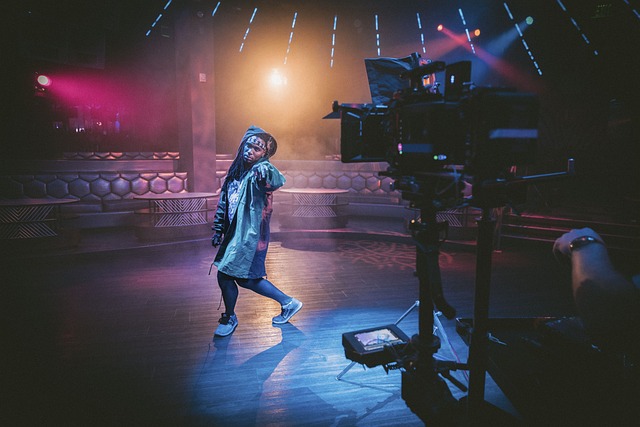When you step into a club, a concert hall, or even a backyard rave, the first thing that captures your attention is the sound. A pulsating bass line that reverberates through your chest, soaring electric guitars that cut through the air, and a drum kit that drives the rhythm—these are the building blocks of a memorable rock party. Behind every electrifying performance lies meticulous record production. Crafting an epic party soundscape in the rock genre requires more than just great musicianship; it demands an understanding of how to capture, shape, and mix audio to create an immersive experience that makes people move.
Choosing the Right Gear for Raw Energy
Record production starts with the right equipment. In the rock realm, the sound is defined by authenticity and power. Musicians often favor analog gear for its warmth and natural compression. When planning a recording session, consider the following essentials:
- High‑quality microphones that can handle high SPLs, such as dynamic mics for drums and guitar cabinets.
- Professional audio interfaces with low latency and ample preamps to preserve sonic integrity.
- Acoustic treatment to minimize reflections and capture a clean drum sound.
- Hardware compressors and equalizers to shape the tone before it reaches the recording medium.
These tools provide the foundation upon which the rest of the production process builds.
Capturing the Live Feel
One of the core goals in rock record production is to preserve the live feel. Listeners expect the music to feel alive, as if the band is performing right in front of them. Techniques to achieve this include:
- Room mic placement: Positioning overhead mics to capture natural reverb and subtle room ambience.
- Using a single drum mic to avoid isolation and maintain cohesion.
- Recording all instruments simultaneously when possible, so the musicians feed off each other’s energy.
- Retaining subtle bleed between tracks to give a sense of real space.
When you listen back to a mix that includes these elements, you hear the subtle fluctuations in dynamics that make the track feel like a live event.
Guitar Tone: The Soul of a Rock Party
The electric guitar is the heartbeat of any rock party. Record production for guitar tracks focuses on capturing clarity, punch, and sustain. Here’s how to get it right:
- Choose a pickup that matches the song’s energy—bridge for sharp attack, neck for warmth.
- Use a mic that can handle high dynamics, such as a Shure SM57 or a DPA 4017.
- Experiment with mic placement—close miking for isolation, and a distant mic for room sound.
- Apply a subtle preamp boost to bring out harmonics without clipping.
Once recorded, the mix engineer may add a touch of delay or chorus to create depth, but the core tone should remain authentic to the guitarist’s playing style.
Drum Recording Tips for Party‑Ready Beats
In a rock party environment, the drum track must punch through the mix and ignite the crowd. Successful drum record production often involves:
- Micing the kick with a focused, low‑frequency focus to lock the groove.
- Using a pair of overhead mics to capture the cymbals and overall kit balance.
- Adding a room mic to introduce ambience and a sense of space.
- Employing parallel compression to retain the initial attack while adding sustain.
With these techniques, the drums feel both powerful and expansive, exactly what a high‑energy party needs.
Vocal Production: Making the Chorus Pop
Even in a heavy rock track, the vocals must stand out. The record production process for vocals focuses on clarity, presence, and emotional impact. Key steps include:
- Choosing a microphone with a warm, punchy frequency response—typically a large‑diaphragm condenser.
- Recording multiple takes and comping the best moments to create a flawless performance.
- Using gentle compression to even out dynamics without squashing the natural vocal expressiveness.
- Adding harmonic exciter or subtle reverb to give the vocal a sense of air and space.
When the vocals sit perfectly in the mix, they become the focal point that drives the crowd to sing along.
Creative Effects for Party Atmosphere
Beyond basic recording, record production can elevate a track with creative effects that add excitement. Some popular choices in rock party tracks are:
- Stutter edits or glitch delays to build tension before a breakdown.
- Layering reverse reverb on snare hits to create a swoosh that propels the beat.
- Using side‑chain compression to make the bass and kick carve out space for the synth or guitar hooks.
- Adding subtle distortion to guitars or synths to give the mix grit.
When applied sparingly, these effects can transform a good track into a party anthem.
The Mixing Stage: Balancing the Elements
Mixing is where all the recorded tracks come together. In record production, a balanced mix ensures each instrument occupies its own sonic space while still contributing to the overall energy. Here are essential mixing practices for a rock party track:
- Use equalization to carve out frequency gaps—scooping low mids from the guitars to let the bass breathe.
- Apply multiband compression to control dynamics while maintaining natural transients.
- Pan instruments to create width—placing guitars slightly left/right, drums centered.
- Automate volume and effect sends to highlight crucial moments like breakdowns or solos.
The goal is to produce a cohesive sound that feels full on every speaker, from small club monitors to massive stadium rigs.
Mastering for the Dance Floor
Mastering finalizes the track and ensures it sounds great on all playback systems. For a rock party hit, mastering focuses on:
- Increasing overall loudness without sacrificing dynamic range.
- Adding subtle harmonic enhancement for a brighter top end.
- Ensuring the track meets loudness standards (typically -14 LUFS for streaming platforms).
- Finalizing EQ to balance the low-end punch and high-end sparkle for club speakers.
Once mastered, the track is ready to ignite dance floors worldwide.
Understanding Music Culture: The Heart of a Party
Record production is technical, but a successful party track also needs to resonate with its audience. Rock culture thrives on authenticity, rebellion, and communal experience. To capture this spirit:
- Involve musicians who embody the genre’s ethos—rawness, passion, and a touch of defiance.
- Incorporate lyrical themes that speak to the crowd, such as freedom, unity, or overcoming adversity.
- Use live performance footage in promotional material to showcase the energy that translates into recordings.
- Keep the production honest—avoid over‑processing that strips the track of its edge.
When the technical craftsmanship aligns with cultural authenticity, the result is a track that not only sounds great but also feels like a rallying cry.
From Studio to Stage: Ensuring Live Reproducibility
Many rock bands transition tracks from studio recordings to live shows. Record production should therefore consider live reproducibility. Key practices include:
- Recording with a setup that mirrors live amplification stages.
- Creating a mix that can be reproduced with typical stage gear and monitoring.
- Providing a clean reference mix for the band’s sound engineer.
- Testing the track on a full‑band rehearsal to identify any sonic gaps.
By bridging the gap between studio and stage, the track becomes a lasting part of the band’s identity and a staple at parties.
Future Trends: Tech Advancements in Record Production
The rock genre continues to evolve, and record production techniques adapt accordingly. Emerging tools that shape the future of epic party soundscapes include:
- AI‑driven mixing assistants that suggest EQ and compression settings based on track genre.
- Spatial audio formats (Dolby Atmos, Auro‑3D) that immerse listeners in a 3‑D sound field.
- Cloud‑based collaboration platforms that allow producers, musicians, and engineers to work in real time.
- High‑resolution audio formats (24‑bit/192 kHz) that capture more detail for future listening devices.
While these technologies enhance the creative process, the core principles of record production—capturing authenticity, balancing energy, and respecting the cultural roots of rock—remain timeless.
Takeaway: Crafting an Unforgettable Party Anthem
Rock record production for epic party soundscapes blends meticulous technical execution with a deep understanding of music culture. From selecting the right gear to capturing live energy, from mastering guitar tones to balancing the mix, every step shapes the final product. By honoring the genre’s authenticity while embracing modern technology, producers can create tracks that not only sound powerful but also ignite the spirit of the crowd. When a song’s energy is felt, not just heard, it becomes a timeless anthem that keeps people dancing long after the lights dim.


